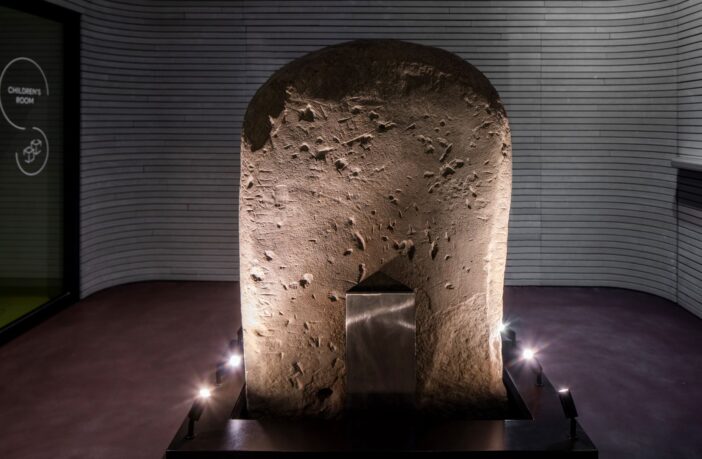A 2,500-year-old stone slab found in Italy and inscribed in the ancient, extinct Etruscan language is now on show to the public for the first time.
But you’ll have to venture to the Fondazione Luigi Rovati museum in Milan to see The Vicchio Stele, as it is called, which was discovered in 2015 by a team of archaeologists including the OU’s Professor of Archaeology, Phil Perkins.
It was discovered at Poggio Colla in the Mugello Valley near, Florence. The Etruscans were actually the first culture in ancient Italy to build temples with columns and decorated roofs, and much of what we know about the Etruscans comes from their temple buildings.
The team that included six universities from the US and the UK, found the stele carefully placed in the side wall of a monumental temple built around 500 BCE. On display, the stele stands 1.2m high with the upper part well finished and bearing several inscriptions.
Why the find is important
The lower part is unfinished and would have been inserted in the ground indicating that the stele was set up as a monument before the temple was built, and later reused as a feature of the temple building.
The find is important because it bears one of the three longest Etruscan inscriptions concerning religious matters that have ever been found.
Its 70 letters are legible, but it may originally have had as many as 200, although many are either difficult or impossible to read due to the erosion of the surface of the stone over the past 2,500 years.
One part of the inscription is thought to say: “To Tinia in the place (sanctuary) of Uni”. Tinia and Uni are the Etruscan equivalents of the Roman supreme deities Jupiter and Juno.
Professor Perkins said:
“It is very unusual to find clear evidence for which deity was worshipped at an Etruscan sacred site. Only a very few Etruscan sanctuaries can be so conclusively identified and here we have the strongest evidence for the two most important Etruscan divinities.”
Work is still under way to decipher the remainder of the text. Professor Perkins said:
“I am very excited and proud to see the stele on display to the public at last. It is a tribute to the hard work of all the students and staff who worked on the excavation.”
Picture credit: Daniel Portanome for Fondazione Luigi Rovati museum



